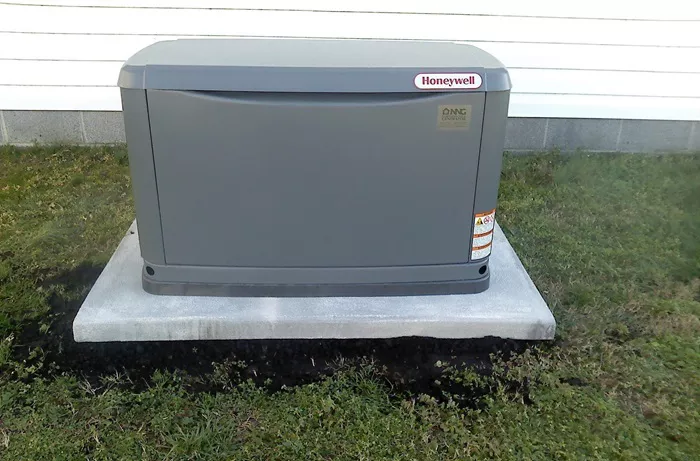Home generators are essential backup power sources that keep your lights on and appliances running during outages. Whether you’re dealing with a storm-induced blackout or a grid failure, understanding how these machines work can help you choose the right one and maintain it properly.
In this guide, we’ll break down the mechanics of home generators, their different types, fuel sources, and key components that make them function efficiently.
How Home Generators Work: The Basics
A home generator operates by converting mechanical energy into electrical energy. This process involves several key steps:
Fuel Combustion : The generator’s engine burns fuel (such as gasoline, diesel, propane, or natural gas) to produce mechanical energy.
Mechanical Rotation : The engine spins a component called the alternator (or generator head).
Electromagnetic Induction : The alternator uses magnets and copper coils to generate an electrical current.
Power Distribution : The electricity flows through a transfer switch, which safely directs power to your home’s circuits.
Generators can either run continuously (standby generators) or be manually started (portable generators). Next, let’s explore the different types.
Types of Home Generators
Portable Generators
Portable generators are smaller, temporary power sources that you can move around. They typically run on gasoline or propane and require manual starting.
Pros
- Affordable
- Easy to transport
- Good for short-term outages
Cons
- Limited power output
- Require manual refueling
- Not suitable for whole-house backup
Standby Generators
Standby generators are permanently installed outside your home and automatically turn on when the power goes out. They usually run on natural gas or propane.
Pros
- Automatic operation
- Higher power capacity
- Can power an entire home
Cons
- Expensive installation
- Require professional maintenance
Inverter Generators
Inverter generators are a more advanced type of portable generator. They produce cleaner electricity, making them safe for sensitive electronics like laptops and smartphones.
Pros
- Energy-efficient
- Quiet operation
- Stable power output
Cons
- Higher cost than standard portable models
- Lower wattage capacity
Key Components of a Home Generator
To understand how a generator runs, it’s important to know its main parts:
Engine
The engine is the heart of the generator, converting fuel into mechanical energy. Larger engines produce more power but consume more fuel.
Alternator (Generator Head)
The alternator contains a rotor (moving part with magnets) and a stator (stationary copper coils). When the rotor spins, it creates a magnetic field that induces an electrical current in the stator.
Fuel System
The fuel system includes a tank, pump, and injector (or carburetor). It ensures a steady supply of fuel to the engine.
Voltage Regulator
This component stabilizes the electrical output, preventing power surges that could damage appliances.
Cooling & Exhaust Systems
Generators produce heat, so they need cooling systems (air or liquid) to prevent overheating. The exhaust system safely vents fumes.
Control Panel
The control panel allows you to start/stop the generator, monitor voltage, and check for faults.
Transfer Switch (For Standby Generators)
A transfer switch disconnects your home from the grid when the generator kicks in, preventing backfeeding (which can be dangerous for utility workers).
How Different Fuels Affect Generator Performance
The type of fuel your generator uses impacts efficiency, runtime, and maintenance needs.
Gasoline
Pros: Readily available, affordable upfront cost.
Cons: Short shelf life (stabilizers needed), less efficient.
Diesel
Pros: More fuel-efficient, longer engine life.
Cons: Noisy, emits more fumes.
Propane
Pros: Clean-burning, long shelf life.
Cons: Requires large storage tanks.
Natural Gas
Pros: Unlimited supply (if connected to a gas line).
Cons: Requires professional installation.
How Automatic Standby Generators Work
Standby generators are the most convenient option because they turn on automatically. Here’s how they operate:
Power Failure Detection : A sensor monitors your home’s electrical supply.
Engine Startup : When an outage is detected, the generator starts within seconds.
Transfer Switch Activation : The switch cuts off grid power and connects the generator to your home’s circuits.
Continuous Operation : The generator runs until utility power is restored.
Automatic Shutdown : Once the grid is back, the generator shuts off and resets.
Maintenance Tips for Reliable Generator Performance
To keep your generator running smoothly:
Change the Oil Regularly : Just like a car, generators need fresh oil.
Check the Air Filter : A clogged filter reduces efficiency.
Test the Battery (Standby Models) : Weak batteries prevent automatic startups.
Run It Periodically : Let the generator operate for 10-15 minutes monthly to keep parts lubricated.
Store Fuel Properly : Use fuel stabilizers for gasoline and keep propane tanks sealed.
Conclusion
Home generators are complex machines, but their operation boils down to converting fuel into electricity. Whether you choose a portable, standby, or inverter model, understanding how they work helps you make an informed decision and maintain them properly. By selecting the right fuel type, performing regular maintenance, and knowing the key components, you can ensure your generator provides reliable backup power whenever you need it.
If you’re considering buying one, assess your power needs and consult a professional for installation to keep your home running smoothly during outages.

